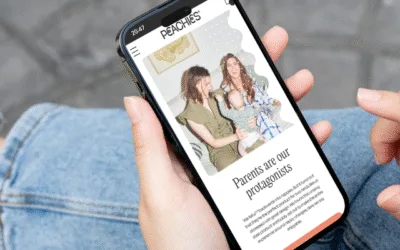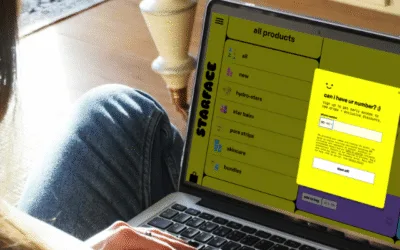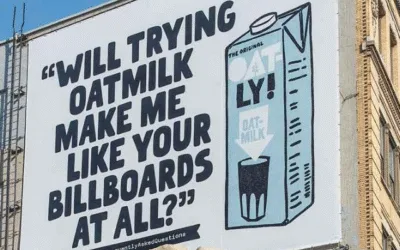Peachies beat Pampers by selling sleep, not nappies. Learn their Ladder of Why messaging trick to make your copy resonate.
How to write FAQs that catch your buyers before they bounce (with examples)
Struggling with abandoned carts? Learn how to turn your FAQs into a high-converting, trust-building sales tool, in just 15 minutes.

Get pro copy tips, branding tricks and e-comm insights directly to your inbox every Tuesday.
This week, rather than dusting off our soapbox again, we thought we’d dig into quick win you can do in 15-minutes and make a massive difference to a bit of copy that doesn’t get enough love: your FAQs.
You see, whenever we’re working on projects and we bring up FAQs, the conversation almost always becomes “oh, we’ll get a customer support team member to spin some content up” or “oh, our SEO team will go through and make sure we’re getting the keywords in there“.
And that’s great.
(We’d be lying if we said that we don’t use FAQs to sneak some clunky keywords in or try and getting cited by AI.)
But FAQs are more than just a traffic tool.
When we’re working on copy, especially on a PDP, we like to think of FAQs as our last opportunity to nudge somebody from being on the fence and into that “buy now” state of mind.
How? Let’s dig into it 👇
FAQs aren’t just a handy place to dump SEO keywords. They’re hidden opportunities to take somebody from hesitating to buying.
FAQs live in a weird spot in the buyer journey.
They’re not right at the top, where you need to grab attention with big bold headlines and Meta ads and hooks and scroll-stopping copy techniques.
And they’re not right at the bottom of the funnel, where it’s all about proof and trust and getting that add to cart button clicked.
They sit in that murky middle. That part of the journey where they’ve already thought “I like this”, but haven’t quite given themselves permission to buy yet.
And that’s where the doubt creeps in.
“Will this fit me?”
“Is the colour true to life?”
“How long does it last?”
These aren’t big, dramatic objections that are on everyone’s mind, so it doesn’t make sense to include them in the main product descriptions or top of funnel content. Nor should we address them in the microcopy around the checkout.
But these little “hmm, I’m not sure, I should be sensible and find out” moments stack up.
And when our brains come across a question they can’t find an answer for, they default to “I’ll decide later” AKA bye-bye sale.
Psychologists call this the need for cognitive closure (which is related to the Surreal ads we talked about a few weeks ago).
Our brains are wired to need to feel compelled to swap that nagging doubt for a firm, tidy answer. So when we wonder something about a product we’re looking at, we start looking anywhere we can for an answer.
And in that mad scramble to close that loop in our brains, we become more and more likely to form judgments based on the first answer we stumble across.
In other words, we’re not thinking critically. We’re not diving deep for the objective truth. Our brains are just jonesing for an information fix and will cling to the first answer they find.
This is called impressional primacy and the TLDR of it is this: our brains are busy and a bit lazy. If we find a satisfactory answer to our question quickly, that becomes The Truth in our brains and we don’t bother to question it.
(Which is why we love advocating for product-specific FAQs on PDPs. It allows you to control the narrative rather than have a customer ask ChatGPT or search through reviews to get the answer they want.)
So, here’s how to control the narrative and nudge customers towards buying with some psychology-backed FAQ writing tips 👇
💡 This week’s big idea: FAQs aren’t just customer service features. They’re an underrated conversion tool, too.
The data on FAQs as a sales nudge tool is pretty conclusive.
👉 53% of shoppers say they’ll abandon a purchase if they can’t find a quick answer. (It’s an older study, but it’s the latest data we could find. And it’s still the gold standard research for this topic.)
👉 One study found that browsers who interact with FAQs and Q&As are over twice as likely to convert into customers.
👉 According to the Harvard Business Review, 81% of customers prefer to try and self-serve (AKA, look for the answers themselves)
👉 Convertcart even cite comprehensive FAQs as a way to lower returns and refunds.
And, as a Baymard Institute study from a few years ago points out:
“One of the major issues on product pages were unaddressed user questions and concerns.When the subjects felt unsure about a product, they either went off-site to research it further (at which point competitors were likely to pick them up), or simply gave up and abandoned the purchase.
Sites thus face a dilemma: on the one hand, their product descriptions must remain short and appealing which makes it impossible to answer all user questions or concerns about the product.
Yet on the other hand, not addressing all of these questions is highly harmful to the user experience too, and may also result in abandonments.”
This dilemma plays into a central idea when you’re thinking about copy. There are two hats you need to wear at all times:
1) Make the offer so tempting that customers can’t help but click buy now
2) Remove any friction that’s stopping people from clicking buy now
Now, there’s lots of advice on how to write copy that gets people to buy. (We’ve written a lot of them, too.)
There’s not so much on how to do part 2.
(Mostly because it’s in that grey zone of UX writing vs copywriting. For us, there’s not much difference between the two. If it’s words that are going to help impact whether somebody buys or not, it’s “copy”. Especially when brands that focus on CX they see an 80% increase in revenue on average.)
So we’re digging into how you can use your FAQs to remove those last, nagging bits of friction that are stopping customers buying from you 👇
How to write better FAQs: breaking down the anatomy of a great answer
There are two kinds of FAQs.
There’s the kind that feels like it’s been written by the legal department that nobody wants to read (sorry, legal team) and the kind that meet a customer where they’re at, answers their question, and keep them on the path to hitting buy now.
So, what’s the difference between the two?
In terms of the information you give them? Not very much.
After all, the answer to the question is the answer to the question, right?
It’s more about how you present that information to them.
It’s about giving the buyer exactly what they need to move forward quickly, clearly, and in a way that builds trust.
Here’s what we’ve found makes the difference 👇
1. Start with a crystal clear answer to the question
Forget preamble, forget any kind of marketing speak, forget a clever opening line… just get straight to the heart of the answer.
Your customers don’t want to scroll through five lines of copy before they can scratch that brain itch. They just want the truth, fast.
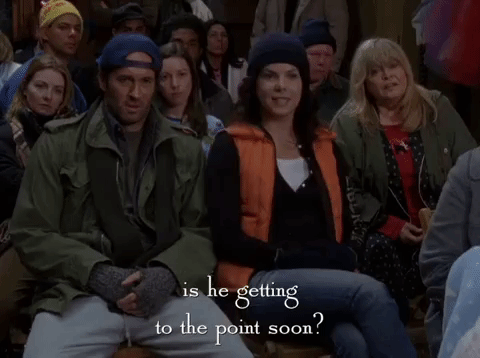
So, if they can’t see it immediately, they move on.
But a quick and fast answer? That ticks all the boxes. More than that, studies into cognitive fluency tell us that our brains reward us when we read information that’s easy to parse, so we trust it more.
Look at the difference it makes 👇
❌ Do these come with a warranty? All of our products come with a money back guarantee.
✅ Do these come with a warranty? Yes, absolutely. All of our products come with a money back guarantee.
See the subtle difference?
The first example requires the customer to parse the meaning and translate it into a yes. The second example lets the customer close that mental loop faster by just giving them a clear answer right off the bat.
👋 “But what if the answer isn’t a simple yes/no? What if there’s nuance?”
Lead with that nuance. Highlight it from the off.
A simple “it depends” or “It’s complicated” still closes that brain-itch.
Then you can get into it faster. (It also feels more honest and transparent, which is always a big plus.)
Check it out 👇
❌ How long will these last?
Our products are made with high-quality materials designed for long-term use. With proper care, they’ll remain a favourite for years to come.
✅ How long will these last?
Well, that depends how you use them, but here’s what we can tell you:
• Everyday wearers get around 18–24 months of solid use.
• Occasional wearers easily get 3+ years.
• We guarantee they last for the first 12 months, no matter what.
2. Make your answers super easy to skim
Yes, yes… we know this is hardly the most revolutionary bit of copywriting advice out there.
In fact, we were half-tempted to leave it out.
But while we see brands nailing skimmability (a real word, despite what spellcheck says) across their websites, the average FAQ we read is cluuuuunky.
We mean, just look at this from Dell 👇
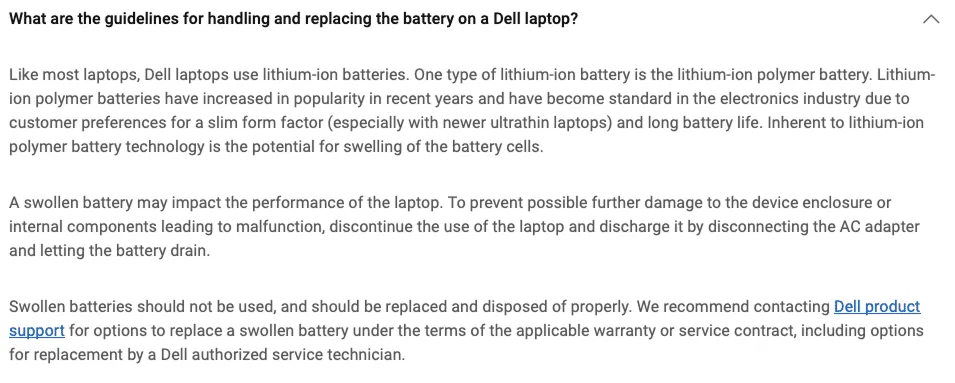
It’s rough, right?
Instead, make sure you do all the things we talk about in this article.
- Use bullet points to make things easier to skim. (As we said before “bullet points are fucking great”. Research by HubSpot found that simplifying content with bullet points can increase conversion rates by up to 12%.)
- Aim for answers of 90 words or less. According to a study by SEMrush, any paragraph longer than 90 words is going to get ignored by customers. So keep things short and snappy.
- Use bold and italics to highlight the key information. Research by the Nielsen Norman Group shows that highlighting key phrases with bold text makes content way easier to read and helps us remember the information even if we’re skimming.
- Aim for a reading age of 6 or below. As we said in a previous email, reading age is super important to make sure people actually read and understand your copy. Just look at that Dell answer. That’s written at a Grade 14 but the average adult reads at a Grade 9, which means that it’s making customers think to figure out the answer rather than closing that brain loop for them.
3. Be as concrete and specific as possible
If we look back at the research on cognitive closure, we’ll see that we won’t just take any answer to close the loops in our brains. We’ll take the first satisfactory answer we find.
And when your customer is trying to close a loop in their brain, vagueness just doesn’t scratch that itch.
Check this out 👇
❌ How long does shipping take? We offer fast-tracked shipping at the checkout.
✅ How long does shipping take? We ship all orders placed by 4pm the same day. You can choose your delivery speed at the checkout. The fastest we offer is 48-hour signed-for delivery.
See how in the first example the ambiguity and lack of concrete details creates more friction. It’s an answer, but it’s not a satisfactory answer. It feels like the brand is being slippery and dishonest.
But when you give specifics, the answer feels far more trustworthy and real. You feel like the brand is across the details so you don’t have to worry anymore.
Empathy isn’t always about tone of voice. Sometimes, it’s about giving customers exactly what they’re looking for. And that’s exactly what concreteness does. It tells the customer, “You don’t need to guess or take a risk. I’ve got you.”
And that’s another gentle nudge towards that “buy now” button.
4. Don’t lose your brand voice, but maybe turn it down a bit.
Look, if you’ve read anything we’ve ever written, you’ll know there’s nothing we love more than a brand that uses its voice everywhere.
So we’re definitely not saying that your FAQs should be sterile, Dell-like answers with no personality at all.
But sometimes we’ll see a brand overcorrect their FAQs and go FULL VOICE. And that’s a big no-no too.
Check it out 👇
❌ Is this product good for sensitive skin? Our formula is a soothing symphony of botanicals, crafted to pamper even the most delicate of complexions. We like to call it a spa day in a bottle.
✅ Is this product good for sensitive skin? Yes, it’s formulated for sensitive skin. It’s been dermatologist-tested, it’s fragrance-free, and it has no known irritants. (Basically, it’s a spa day in a bottle. Just add your own cucumber slices and whale music.)
Why is Option B better? Because when someone’s in “I need an answer” mode, our brains value clarity and speed over style.
Like the bullet points and giving a clear answer first, it all comes back to processing fluency: when information is easy to digest and understand, it feels more trustworthy.
Then, once you’ve delivered on that, that’s when you can make the whole experience a bit more on-brand.
Ultimately, FAQs, like all good copywriting, are all about having empathy for customers and meeting them where they’re at, rather than where we want them to be.
And while FAQs might not be the most glamorous or sexiest project to tackle, they’re one of the simplest, easiest-to-implement ways to tackle that split second of hesitation that leads to customers closing the tab and disappearing forever.
Dive into more free tips and tricks 👇
How Starface use orthography to build a killer brand voice their customers love
The words you write matter. But so do your full stops, emojis and lowercase letters. Learn how to turn punctuation into a powerful part of your brand voice.
Why Oatly’s brand voice is so damn good (and how yours can be, too)
We dig into the three layers of brand voice (10,000ft, 1,000ft, ground level), show how Oatly nails each one and how you can do it for your own brand.
The weekly newsletter that takes your brand’s copy from “meh” to “hell f*cking yeah!”
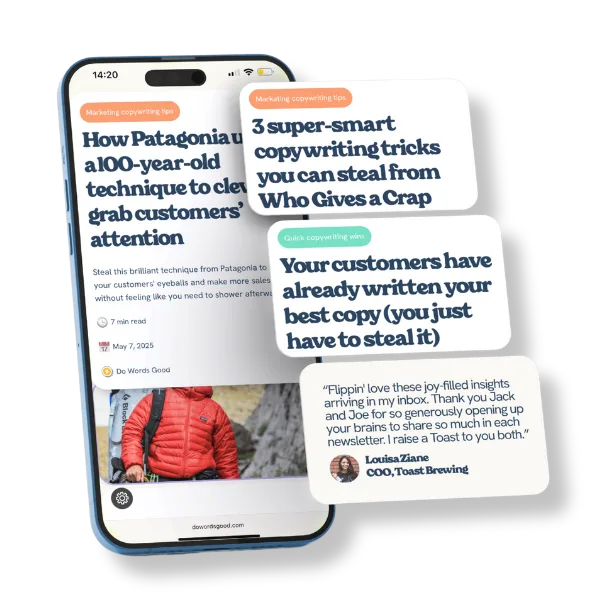
Read every week by legends at brands like these











